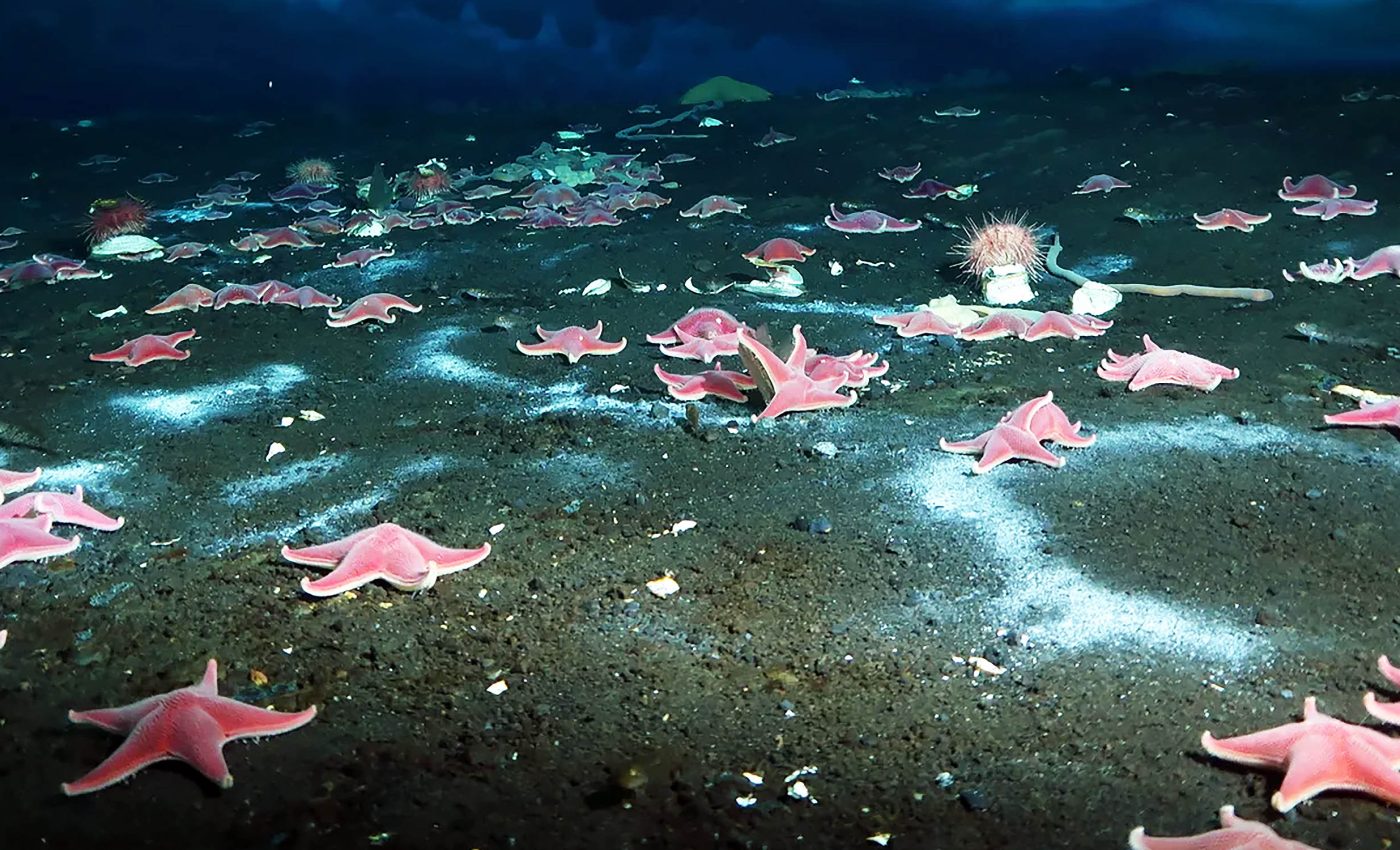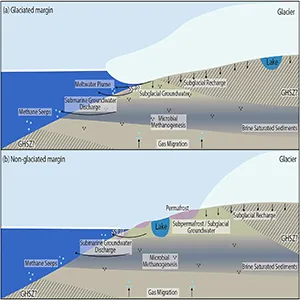
Discovery made on the Antarctic seabed has scientists very alarmed
Antarctica’s coastal seafloor is changing. In the Ross Sea, researchers are now seeing patches where fluid and gas move up through sediments and into the water. They call these spots on the Antarctic seafloor “seeps.”
The appearance of new seeps in areas that have been checked for decades signals a shift with real consequences for climate and marine life.
These seeps bring up chemicals, including methane, and they can reshape local ecosystems. They’ve turned up in places long surveyed under sea ice “ceilings,” which makes their recent activity stand out.
“The first was discovered by chance in 2012 and since then they’ve been cropping up at a remarkable rate. A similar phenomenon has also been observed in the Arctic,” explained Earth Sciences New Zealand marine scientist Dr. Sarah Seabrook.
The pattern points to seafloor processes that are “turning on” in real time.
Understanding Antarctic seeps
A seep forms when fluids and gases travel through cracks and pores in seafloor sediment and escape upward. At the surface, you often find pale “microbial mats” that feed on those chemicals.
Divers and remotely operated vehicles documented these chalky mats around McMurdo Sound, including Cape Evans, Turtle Rock, Granite Harbor, Cape Barne, and Dunlop Island.
Because teams have revisited some of these sites since the 1960s without reporting seep activity, the evidence indicates that at least some features are truly emergent.
Other seeps appeared offshore along the Northern Victoria Land coast. They were first recognized acoustically from a research ship, where bubble plumes show up clearly at specific frequencies.
In 2021 and 2023, the team counted more than two dozen plumes between about 130 and 790 feet deep in a relatively small area. Cameras confirmed the mats below. Earlier passes didn’t show these plumes; later surveys did.
This stepwise record supports active change. It expands the known footprint of seafloor fluid flow in the Ross Sea and highlights sites worth tracking.
Methane in the Antarctic seeps
The researchers measured methane using sealed chambers placed directly on the seabed over seep patches and over nearby “quiet” sediments.
Over a day or two, they sampled the water trapped in those chambers and analyzed methane.
At the long-known Cinder Cones site, they recorded an average of roughly a millimole of methane per square meter per day in 2022.
At another shallow Cinder Cones spot the rate was several millimoles per square meter per day. Turtle Rock ran higher in a 2022 measurement. Background sediments came in below detection limits.
Around several new fluid plumes, the very center often lacked the usual mix of sponges, corals, and echinoderms.
The core areas showed different, sparse communities, with transitional belts of opportunistic species at the edges.
One Ross Sea site reported an outbreak of sea star wasting disease, which the authors suggest could relate to lower oxygen under the mats or other seep-linked stressors.
Seeps can lower oxygen and change acidity. They can also add nutrients such as iron. Those shifts ripple through the local food web and rearrange who thrives where.

Searching for the cause
Antarctica stores carbon in multiple forms: methane in gas hydrates beneath the seafloor, methane in subglacial sediments, and carbon-rich brines in hidden groundwater systems.
Warmer ocean water, thinner ice, and pressure changes from losing some of that ice “weight” can destabilize parts of these reservoirs.
Gas hydrates are sensitive to temperature and pressure. If conditions tip, hydrates can release methane and open pathways for deeper gas to move upward.
Because frigid Antarctic water makes the hydrate stability zone relatively shallow near the coast, small shifts close to shore can have an outsized effect.
The study lays out a climate-linked mechanism consistent with basic physics and observations across the sites.

Methane escaping into the air
Shallow seeps can pass methane to the atmosphere if bubbles rise quickly, especially when bubbles collect under sea ice and then escape through cracks or leads. Video shows gas bubbles rising and sticking beneath the ice underside.
“Every time we discover or hear of a new one, we feel immediate excitement, but that excitement is quickly replaced with anxiety and concern about what it all means,” noted Dr. Seabrook.
“If they follow the behavior of other global seep systems, there is the potential for rapid transfer of methane to the atmosphere from a source that is not currently factored into future climate change scenarios.”
Similar shallow systems elsewhere have shown measurable methane transfer to the air, so episodic releases here are plausible.
Methane packs a punch over a 20-year period, warming the planet far more per molecule than carbon dioxide. Even modest sources matter when they occur in many places at once.
What we still don’t know
The new maps and measurements don’t settle the total Antarctic methane budget because they don’t reveal whether these seeps will pulse briefly, persist for decades, or spread.
They also don’t quantify how much methane reaches the air versus how much dissolves or gets consumed by microbes before escape.
The main shift is the baseline. Antarctic coastal seeps were once considered rare. Now there is evidence they’re more common in the Ross Sea, that some switched on in well-watched places, and that they alter local ecosystems.
That raises the stakes for coordinated monitoring, improved methane flux measurements, and studies that connect ice loss, ocean warming, subsurface plumbing, and biology.
Antarctic seeps and Earth’s environment
To sum it all up, the discovery of these new seeps in the Antarctic seas tell us Earth’s systems are shifting in ways we can actually see right now, in real-time, and that matters for all life on the planet.
When methane escapes from shallow seafloors – especially under thinning sea ice – it can add extra heat to the atmosphere over the near term, tightening the feedback loop between warming oceans and further methane release.
At the same time, the seeps reshuffle life on the seafloor by lowering oxygen, changing acidity, and redirecting nutrients, which can ripple through food webs that ultimately connect to fisheries and global carbon cycles.
We don’t yet know how widespread or long-lived these seeps will be, or exactly how much methane reaches the air, but the pattern is clear: places once considered quiet are switching on.
The planet is sending us a very clear signal that deserves careful measurement so scientists can gain a better understanding of how these processes will reshape life on this beautiful blue marble.
The full study was published in the journal Nature Communications.
—–
Like what you read? Subscribe to our newsletter for engaging articles, exclusive content, and the latest updates.
Check us out on EarthSnap, a free app brought to you by Eric Ralls and Earth.com.
—–













